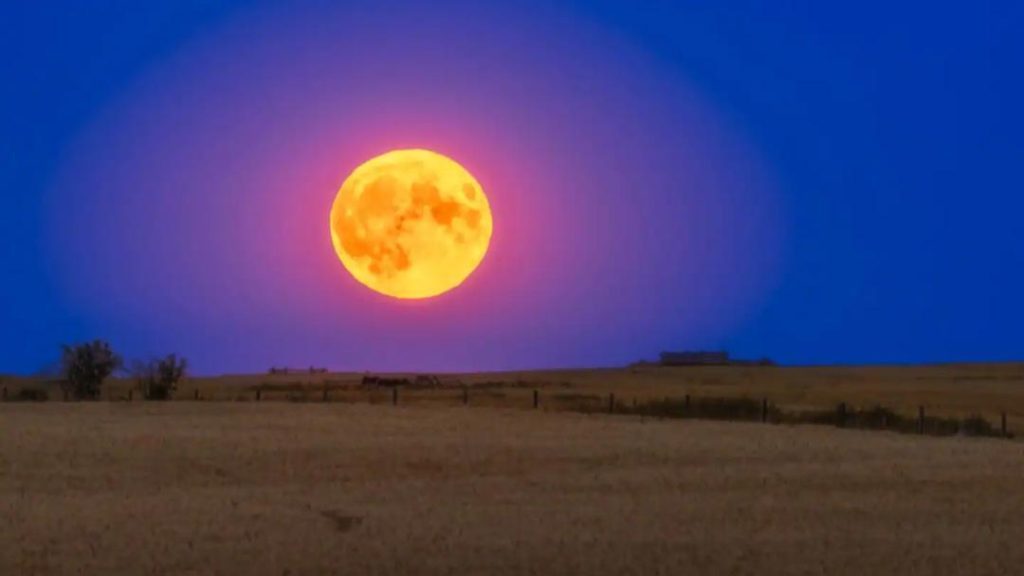
Buck Moon to Light Up Skies on July 10 & 11
This year’s Buck Moon, also known as July’s full moon, is set to captivate the night skies on July 10 and 11. The lunar event will peak at 3:08 am Indian Standard Time (IST) on July 11 in India and at 4:38 pm Eastern Daylight Time (EDT) on July 10 in the United States. As the moon reaches its fullest point, three celestial bodies – Mars, Venus, and Saturn – will be visible before and after the peak, offering a thrilling spectacle for stargazers and astronomy enthusiasts.
Named by Native American tribes like the Algonquin, the Buck Moon gets its name from the time when male deer, or bucks, begin growing new antlers. This phenomenon marks the peak of the breeding season for deer, and the full moon serves as a reminder of the changing seasons.
According to NASA, the Buck Moon will be the second full moon of the summer season, following the Strawberry Moon in June. The Buck Moon is often associated with warmth, growth, and abundance, making it a significant lunar event for many cultures.
Timing and Visibility
The Buck Moon will be visible in the night sky for several days, with the peak occurring at the mentioned times. In India, the moon will rise around 9:30 pm IST on July 10 and set around 5:30 am IST on July 11. In the United States, the moon will rise around 7:30 pm EDT on July 10 and set around 1:30 am EDT on July 11.
For those who want to catch a glimpse of the Buck Moon, the timing is crucial. Make sure to find a spot with minimal light pollution and clear skies to maximize the viewing experience. Gazing at the moon through binoculars or a telescope can also enhance the experience, allowing you to observe the moon’s craters and mountains in greater detail.
Other Celestial Bodies Visible
In addition to the Buck Moon, three other celestial bodies will be visible in the night sky before and after the peak. Mars, Venus, and Saturn will be visible in the western sky around sunset on July 10, offering a unique opportunity to observe the planets up close.
Mars, often referred to as the Red Planet, will be visible in the western sky around 8:30 pm EDT on July 10. Venus, the brightest planet in the solar system, will be visible around 9:30 pm EDT on July 10. Saturn, the ringed planet, will be visible around 10:30 pm EDT on July 10.
Tips for Viewing the Buck Moon
If you’re planning to observe the Buck Moon, here are some tips to keep in mind:
- Find a dark location: Light pollution can obstruct your view of the moon, so try to find a spot with minimal artificial lighting.
- Dress comfortably: Dress in layers and bring a blanket or chair to make your viewing experience comfortable.
- Bring binoculars or a telescope: If you have binoculars or a telescope, bring them along to get a closer look at the moon’s surface.
- Be patient: The Buck Moon will be visible for several days, so be patient and observe it at different times to appreciate its beauty.
- Share the experience: Invite friends and family to join you for the viewing experience, making it a fun and memorable event.
Conclusion
The Buck Moon, also known as July’s full moon, is a significant lunar event that marks the peak of the breeding season for deer. As the moon reaches its fullest point on July 10 and 11, three celestial bodies – Mars, Venus, and Saturn – will be visible in the night sky. Whether you’re an astronomy enthusiast or simply someone who appreciates the beauty of the night sky, the Buck Moon is an event you won’t want to miss.
Source:
https://www.newsbytesapp.com/news/science/buck-moon-2025-when-how-to-see-july-s-full-moon/story






